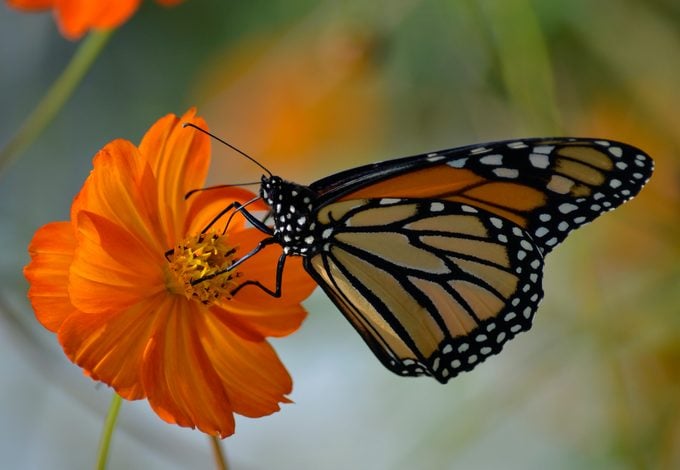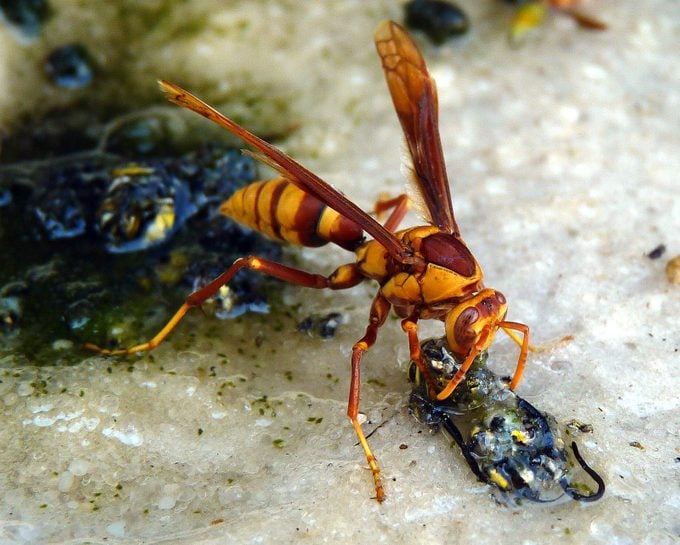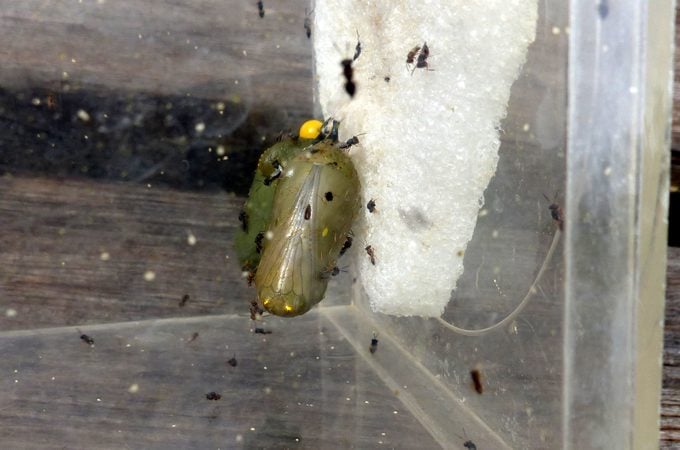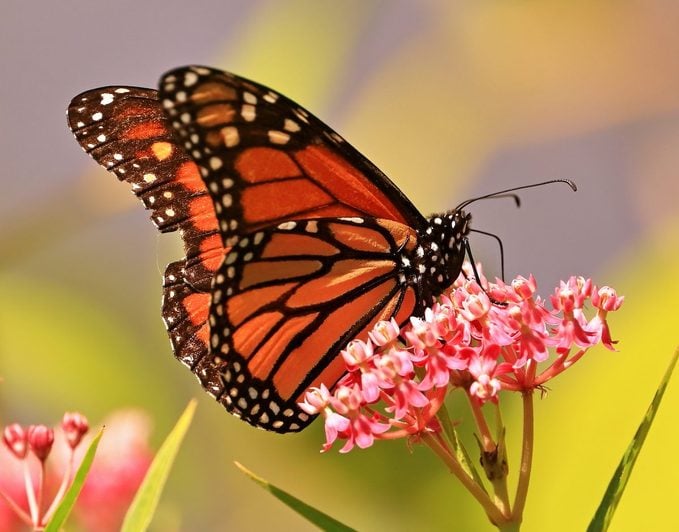Monarch Butterfly Predators and Parasites to Watch For
Updated: Feb. 01, 2023
Learn which monarch butterfly predators and parasites pose a real threat to their survival, and which are part of the natural life cycle.

In July 2022, the IUCN added the monarch butterfly to its list as Endangered. The North American migratory population, which makes its way from as far north as Canada to Mexico each winter, is especially threatened. The biggest problem they face is habitat loss. Many nature-lovers have filled their yards with milkweed and nectar plants to help them out, but monarch butterfly predators and other dangers threaten them too. Here are some to watch for in your own garden.
Monarch Butterfly Predators

Butterflies like monarchs are a natural part of the food web. After all, a female monarch lays between 300 and 800 eggs in her short lifespan. If all of these survived to adulthood, the world would be overrun with butterflies! So monarch butterfly predators help keep things in balance.
Monarch butterflies are poisonous to many vertebrates. As caterpillars, they store up toxins called cardenolides from the milkweed they eat. This doesn’t stop invertebrates, though, especially insects. Ants and spiders love to feast on monarch eggs, and wasps can take on and devour even large caterpillars.
Adult butterflies are less vulnerable to small predators, and many of the larger ones avoid these poisonous mouthfuls—at first. As butterflies age, those toxins break down, so butterflies that are a few weeks old may be attacked by birds, lizards, and other reptiles. Black-headed grosbeaks and black-backed orioles find them especially tasty. Do birds eat bees, mosquitoes and butterflies?
In general, these predators don’t pose a major threat to monarchs, because they’re part of the natural life cycle. If you notice your milkweed plants are infested with ants or wasps, you can try covering them with fine mesh net to protect growing caterpillars.
Do monarch butterfly sightings have meaning?
Monarch Butterfly Parasites and Parasitoids

Parasitoids are insects that lay eggs in or on other organisms, while parasites live out their lives inside their host organisms. Monarchs can be attacked by both.
Tachnid fly and braconid wasps are tiny parasitoids that lay their eggs on monarch caterpillars. The caterpillars seem to develop properly, but just before they pupate (turn into a chrysalis), the larvae or maggots crawl out, leaving a dead caterpillar behind. Chalcid wasps lay their eggs on the chrysalis itself, and hundreds of wee wasps emerge instead of a beautiful butterfly.
Monarchs are vulnerable to several parasites, but the most well-known is Ophryocystis elektroscirrha (OE). Caterpillars infected with OE develop naturally, but their chrysalis often shows small dark spots. OE prevents adult butterflies from developing properly, and if they do hatch out, their wings or bodies are often deformed.
Parasites and parasitoids are especially common in captive monarch populations. This is why it’s best to help these butterflies thrive in the wild. If you’re raising captive monarchs and notice signs of these monarch butterfly predators, do not release them into the wild. Thoroughly clean all of your equipment with a mild bleach solution before using it to raise any more caterpillars.
Discover 3 butterflies that look like monarchs.
Other Monarch Butterfly Challenges

Habitat loss is the number one threat facing monarchs today. The best way you can help is to plant milkweeds native to your area, and plenty of native wildflowers and nectar plants. Going native means you’ll provide these beautiful butterflies with the foods they’ve evolved to eat over millennia. (Native plants are also easier to maintain, and less expensive to grow in the long run.)
Some scientists now recommend avoiding tropical milkweed (Asclepias curassavica) in areas where it does not die back in the winter. There are some indications that it could interfere with migration patterns. It’s also strongly linked to the OE parasite, potentially causing it to infect wild populations at a higher rate. Find out what (and how) monarch butterflies eat.
And it goes without saying that you should avoid pesticides and herbicides whenever possible. Verify your milkweed and nectar plants are grown without the use of neonicotinoids, and treat pests in and around your garden with great caution. Better to tolerate a few ants than to kill endangered monarch butterflies!
Most monarch butterfly predators are part of the natural life cycle. While it can be distressing to see these situations play out in your garden, it’s really just nature behaving like it should. A healthy ecosystem is one of give and take, and if we protect their habitat, monarchs will be around to be part of those ecosystems for years to come.
Next, use this monarch migration map to track their epic journey.




















